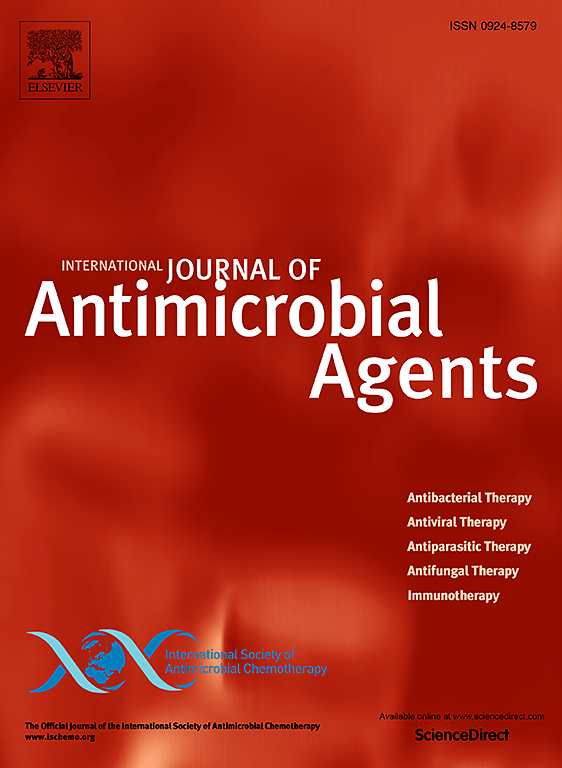Interspecies differences in plasma protein binding of beta-lactam antibiotics
IF 4.9
2区 医学
Q1 INFECTIOUS DISEASES
International Journal of Antimicrobial Agents
Pub Date : 2025-02-20
DOI:10.1016/j.ijantimicag.2025.107476
引用次数: 0
Abstract
Background
Plasma protein binding (PPB) is a critical factor in drug therapy and understanding free compound exposure across preclinical and clinical species is vital for developing new antibiotics. Optimising beta-lactam dosing based on unbound drug concentrations has garnered significant interest, yet there are few data on how interspecies differences in protein binding affect the attainment of targeted unbound concentrations.
Methods
The aim of this study was to examine the protein binding of three beta-lactams, cefiderocol, ceftriaxone, and temocillin, using human, bovine, and rat plasma. Total and unbound beta-lactam concentrations were measured using ultrafiltration. An interspecies comparison of PPB was conducted to evaluate variability in protein binding across the different species.
Results
The study data showed that PPB was highest in human plasma for all three beta-lactam antibiotics tested. PPB for cefiderocol and ceftriaxone was higher in rat plasma than in bovine plasma, whereas PPB for temocillin was higher in bovine plasma than in rat plasma.
Conclusion
The study highlights substantial interspecies differences in the PPB of cefiderocol, ceftriaxone, and temocillin. The findings indicate the need for careful consideration of species-specific PPB in the optimisation of beta-lactam dosing and the development of new pharmaceuticals.
β -内酰胺类抗生素血浆蛋白结合的种间差异。
背景:血浆蛋白结合(PPB)是药物治疗的关键因素,了解临床前和临床物种的游离化合物暴露对开发新的抗生素至关重要。基于非结合药物浓度优化β -内酰胺剂量已经引起了极大的兴趣,然而关于蛋白质结合的物种间差异如何影响目标非结合浓度的综合数据仍然很少。方法:本研究旨在检测三种β -内酰胺类药物:头孢地醇、头孢曲松和替莫西林在人、牛和大鼠血浆中的蛋白结合。超滤法测定总β -内酰胺和未结合β -内酰胺浓度。对PPB进行了种间比较,以评估不同物种之间蛋白质结合的可变性。结果:研究结果显示,三种β -内酰胺类抗生素在人血浆中PPB含量最高。在大鼠血浆中,头孢地罗和头孢曲松的PPB高于牛血浆,而牛血浆中替莫西林的PPB高于大鼠血浆。结论:不同种类药物的蛋白结合存在显著差异。该研究强调了头孢地罗、头孢曲松和替莫西林在血浆蛋白结合方面的实质性物种间差异。我们的研究结果表明,在优化β -内酰胺剂量和开发新药时,需要仔细考虑物种特异性PPB。
本文章由计算机程序翻译,如有差异,请以英文原文为准。
求助全文
约1分钟内获得全文
求助全文
来源期刊
CiteScore
21.60
自引率
0.90%
发文量
176
审稿时长
36 days
期刊介绍:
The International Journal of Antimicrobial Agents is a peer-reviewed publication offering comprehensive and current reference information on the physical, pharmacological, in vitro, and clinical properties of individual antimicrobial agents, covering antiviral, antiparasitic, antibacterial, and antifungal agents. The journal not only communicates new trends and developments through authoritative review articles but also addresses the critical issue of antimicrobial resistance, both in hospital and community settings. Published content includes solicited reviews by leading experts and high-quality original research papers in the specified fields.

 求助内容:
求助内容: 应助结果提醒方式:
应助结果提醒方式:


